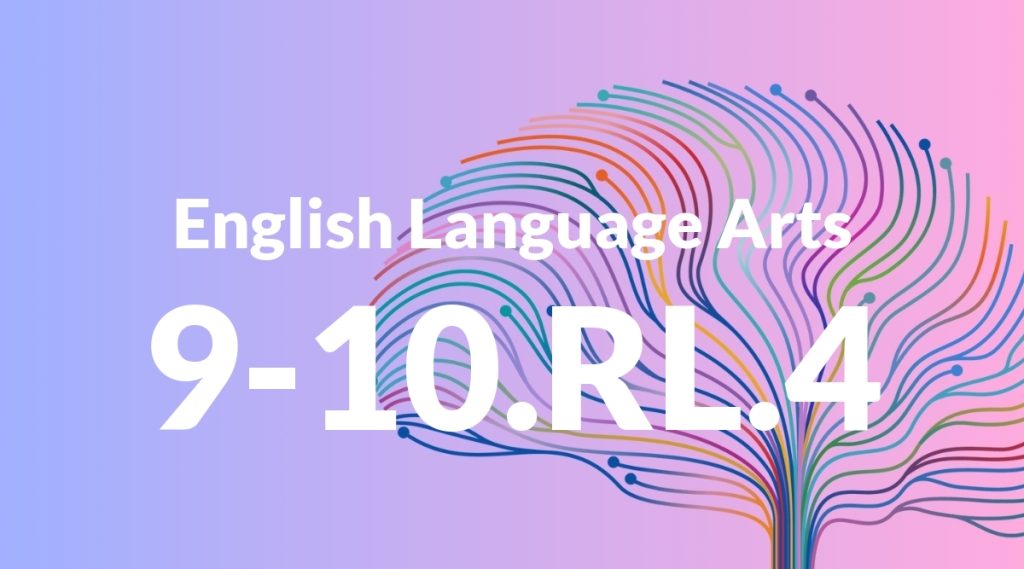Standard: 9-10.RL.4 – Determine the meaning of words and phrases as they are used in the text, including figurative and connotative meanings; analyze the cumulative impact of specific word choices on meaning and tone (e.g., how the language evokes a sense of time and place; how it sets a formal or informal tone).
Grade level: Grade 9-10
Subject: English Language Arts
Domain: Reading: Literature
Teacher Overview
This standard focuses on students’ ability to determine the meaning of words and phrases within a text, including figurative and connotative meanings. It also emphasizes analyzing how specific word choices impact the overall meaning and tone of the text. This is crucial for developing a deeper understanding of literature and enhancing critical reading skills. Students should be familiar with basic figurative language, connotative meanings, and different tones. They should have some experience analyzing texts for these elements.
Mastering this standard will enable students to analyze more complex texts from various genres and time periods. They will also be able to create texts with intentional word choices to convey specific meanings and tones.
Common Misconception 1
Some students might think that figurative language always carries a positive connotation. This is incorrect because figurative language can have both positive and negative connotations depending on the context in which it is used.
Intervention 1
Introduce a variety of texts that use figurative language with different connotations. Discuss how the context of each text influences the connotation and meaning of the figurative language used.
Common Misconception 2
Another common misconception is that tone is always explicitly stated in the text. However, tone is often implied through word choice, sentence structure, and context rather than being directly stated.
Intervention 2
Provide students with practice texts where they must infer the tone based on context clues and word choice. Discuss how these elements contribute to the overall tone of the text.
Prerequisite Knowledge
Students should have a basic understanding of figurative language (e.g., metaphors, similes), connotative meanings, and how word choice can affect meaning. They should also be familiar with different tones (e.g., formal, informal) and have some experience analyzing text for these elements.
Subsequent Knowledge
After mastering this standard, students will be able to apply their understanding of word choice and tone to more complex texts, including those from different time periods and genres. They will also be able to create their own texts with a deliberate use of language to convey specific meanings and tones.
Instructional Activities
- Close reading exercises focusing on word choice and tone
- Group discussions analyzing the tone of different texts
- Writing assignments where students use specific word choices to create a desired tone
- Comparative analysis of texts with different tones
- Multimedia projects analyzing tone in speeches or advertisements




